A mixed diet of kelp can improve growth rates, quality and reduce parasite loads
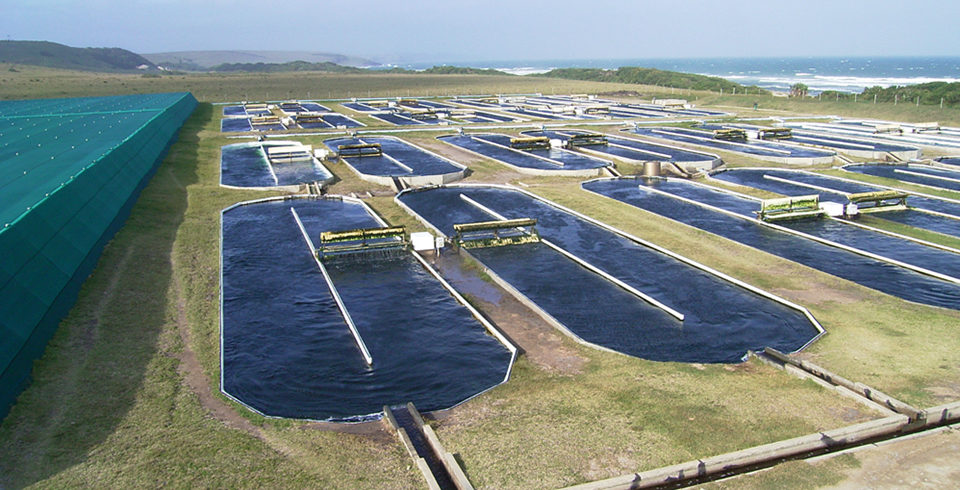
Abalone aquaculture in South Africa based on the local Midas ear abalone (Haliotis midae) has grown rapidly in the last decade, with 13 farms currently producing and many farms still expanding. The production is entirely land-based, with abalones grown in tanks with flow-through sea water.
This production has, to a large extent, replaced the local wild abalone harvest, which has been much reduced by poaching. While over 2,000 metric tons (MT) were harvested annually in the 1960s, now only about one-tenth of that is landed.
Rising production
In 2003, South Africa was the largest producer of cultured abalone outside Asia. Its production, 840 MT in 2005, continues to rise. The abalones are either flown live or exported canned to markets in China and Japan.
Most of the farms are within 150 km either side of Cape Town on the southwest coast of South Africa. The major node of production is in the Hermanus/Gansbaai area east of Cape Town, where higher sea water temperatures than western areas support higher growth rates. These farms use live harvested kelp as the major feed, supplemented at various stages by locally produced artificial feed that contains fish and soy protein. Driven by commercial considerations, efforts to grow seaweeds in integrated systems with the abalone are under way.
Harvested kelp
The harvest of (Ecklonia maxima) kelp on the west coast is controlled by a sophisticated system of “concession areas,” with quotas awarded to concession holders for 10 years for particular stretches of coastline after a government tender process. In the past, tenders were not awarded to abalone farmers, so the majority of the local seaweed industry is intricately linked with abalone farming. The kelp beds only extend as far eastward as Cape Agulhas, the southernmost point of Africa, making this feeding method not feasible for farms further east.
E. maxima, known locally as “sea bamboo,” has blades at the top of a long, hollow stem topped by a floating bulb. The plants can reach the surface in depths up to 8 meters.
Over 6,000 MT per year of kelp are now harvested on the South African west coast for abalone feed, and some kelp beds are reaching sustainable limits. The kelp is harvested mostly using small boats, from which the floating “heads” of the kelp are cut by hand.
Each year, concession holders are allowed to remove 5-10 percent of the standing stock, depending on collection method. Removal of the whole kelp heads kills the plants, and if only the secondary blades – which regenerate – are removed, higher quotas are allowed.
Mixed feed
A growing body of evidence suggests that a mixed diet of kelp plus other seaweeds can give growth rates at least as good as artificial feed, and can improve abalone quality and reduce parasite loads. Two farms on the southeast coast, where there are no kelp beds, grow significant amounts of their own feed (Ulva and some Gracilaria) using abalone waste water. One farm currently grows 4 MT Ulva per day in 32 shallow 8- x 30-meter raceways known locally as “paddle ponds,” with water movement provided by paddlewheels.
Another benefit of growing seaweed on the farm is that seaweed grown in water with increased nitrogen (animal aquaculture effluent and/or fertilized sea water) can have much higher nitrogen levels than wild material. Ulva can be grown with well over 40 percent protein dry weight, more than twice that of natural levels, which increases its quality as abalone feed.
Some of the farms that cultivate their own seaweed have noticed an off taste and sulphurlike smell in their canned abalone. It has been shown that a diet of Ulva can increase the levels of dimethyl sulphonioproprionate in the animals, which, when converted to dimethyl sulphide by heat in the canning process, can affect taste. Studies are continuing, as this chemical change also occurs in wild abalone and may be relevant to abalone taste in general.
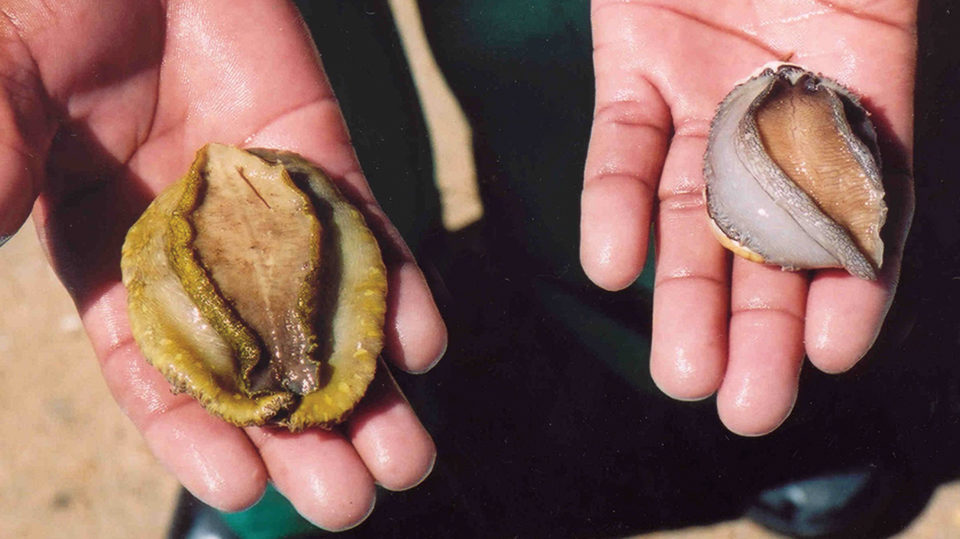
Benefits of integrated aquaculture
The authors are currently working closely with abalone farmers on the southwest coast who are increasing their efforts to grow seaweeds in abalone effluent as an addition to kelp as feed. An extension of one farm has been designed with the inclusion of seaweed raceways. The system is engineered to enable the abalone effluents to pass through the seaweed ponds and then be partially recirculated to the abalone tanks.
This has many benefits. Firstly, the seaweed is used as a biofilter to remove considerable amounts of the dissolved ammonium from the abalone waste water, which allows recirculation and significantly reduced pumping costs. Secondly, a significant source of extra feed (Ulva) is available to the farm, with the prospect of increased growth and vigor.
Thirdly, some farms can be affected by occasional harmful algal blooms in coastal waters that have proved a problem with abalone on this coast. These events are typically short-term (often only a few days), and the presence of the seaweed biofilter may enable 100 percent recirculation for short periods, thus preventing contaminated sea water from entering the system.
Although only set up in early 2006, the farm with raceways is already operating successfully at 50 percent recirculation using four raceways, each producing 1.2 mt of Ulva monthly as additional feed for the farm. This recirculation also increases temperatures in the abalone tanks by around 2 degrees C, increasing growth rates.
Integrated future
Many recent reports have argued that integrated multitrophic aquaculture may be the future direction for all aquaculture, using an approach whereby excess nutrients (especially nitrogen) produced by one cultured organism are treated as a resource to be utilized further, rather than as a problem. Despite the growing literature on integrated aquaculture, there are surprisingly few worldwide examples of commercially viable integrated marine aquaculture systems.
Abalone effluent is not considered an environmental problem in South Africa today. Abalones are herbivores that consume low-protein feeds, and farm densities along the coast are low. Also, the South African coastline is very straight and high energy, with effluent released into the ocean rather than sheltered bays.
Despite the lack of environmental pressure, it is proving commercially beneficial to implement abalone/seaweed systems in South Africa. This is likely to be the case in many other systems, as well, once producers realize the benefits of integrated marine aquaculture.
(Editor’s Note: This article was originally published in the July/August 2006 print edition of the Global Aquaculture Advocate.)
Now that you've reached the end of the article ...
… please consider supporting GSA’s mission to advance responsible seafood practices through education, advocacy and third-party assurances. The Advocate aims to document the evolution of responsible seafood practices and share the expansive knowledge of our vast network of contributors.
By becoming a Global Seafood Alliance member, you’re ensuring that all of the pre-competitive work we do through member benefits, resources and events can continue. Individual membership costs just $50 a year.
Not a GSA member? Join us.
Authors
-
Prof. John J. Bolton
University of Cape Town
Faculty of Science – Botany
Rondebosch 7701 South Africa -
Deborah M. Robertson-Andersson
University of Cape Town
Faculty of Science – Botany
Rondebosch 7701 South Africa -
Dr. Max Troell
The Beijer Institute
Royal Swedish Academy of Sciences
Stockholm, Sweden -
Dr. Christina Halling
Department of Systems Ecology
Stockholm University
Stockholm, Sweden
Related Posts
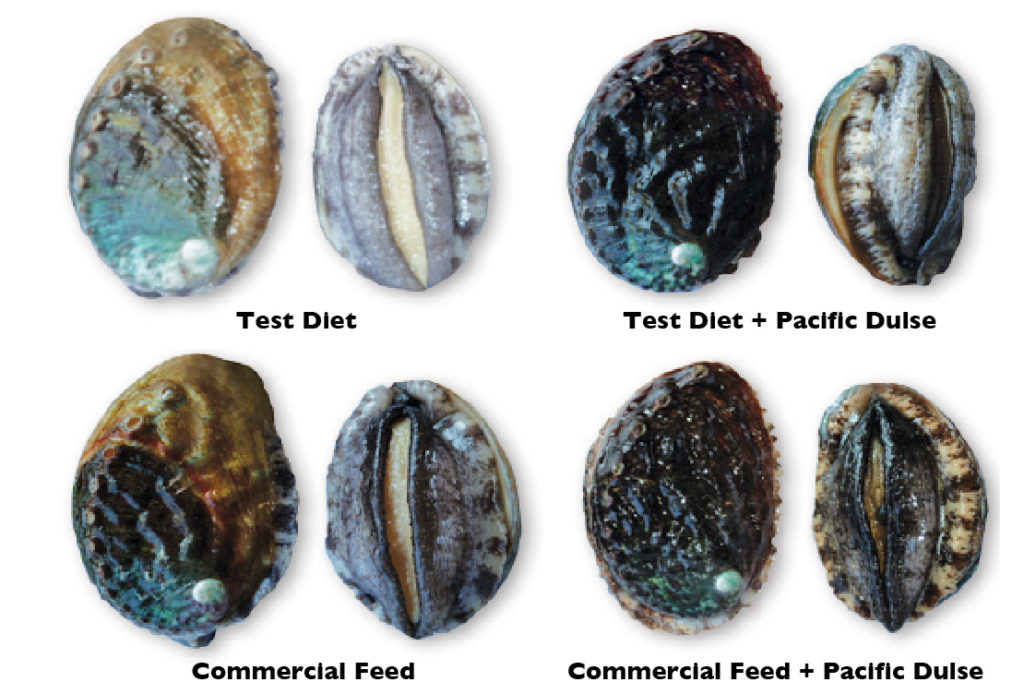
Health & Welfare
Diets affect abalone meat quality, shell color
A preliminary study investigated the effects of diet on the meat quality and shell color of Pacific abalone. A test diet and a commercial abalone feed resulted in lower meat protein content compared to that achieved with a diet of Pacific dulse seaweed. The artificial diets also caused the abalone to have yellow or orange shells. The seaweed diet alone resulted in abalone with dark-brown shells. However, a combination of seaweed and either artificial diet improved abalone growth, meat quality and shell color.
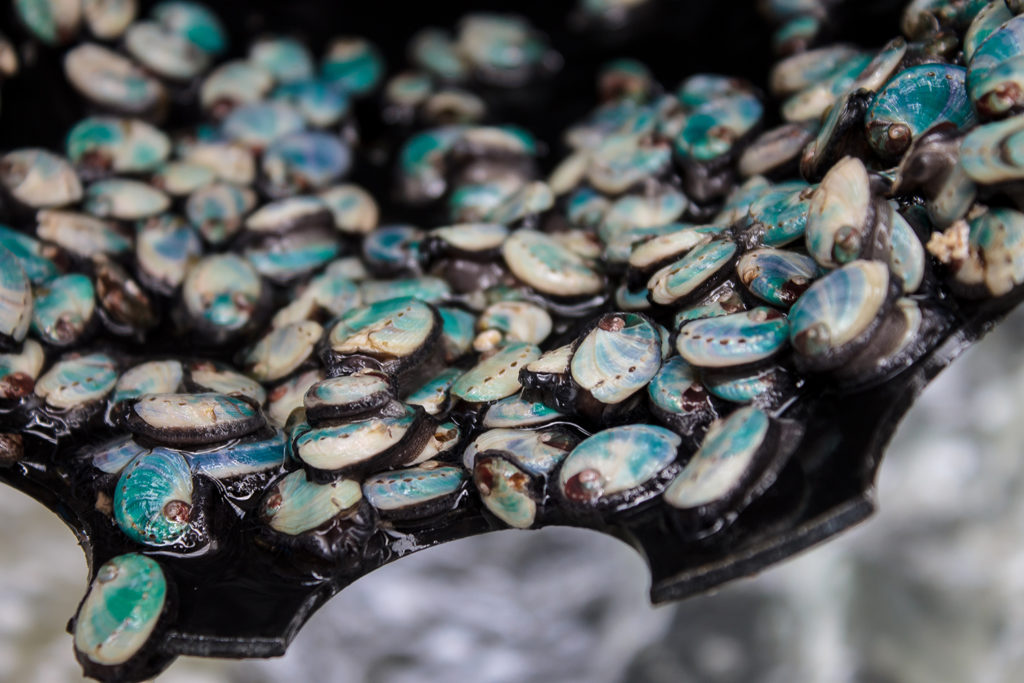
Responsibility
In South Africa, abalone farming goes for gold
Poaching has plagued South Africa’s abalone to the point of decimation. Aquaculture is putting the shellfish back in the water, and back on menus.
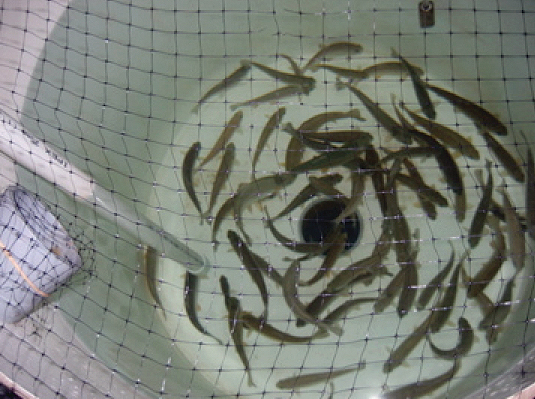
Health & Welfare
Algae shows promise as alternative DHA source in rainbow trout diets
A growth trial in Canada evaluated the use of algae biomass to increase the concentration of long-chain polyunsaturated fatty acids in the tissues of rainbow trout.
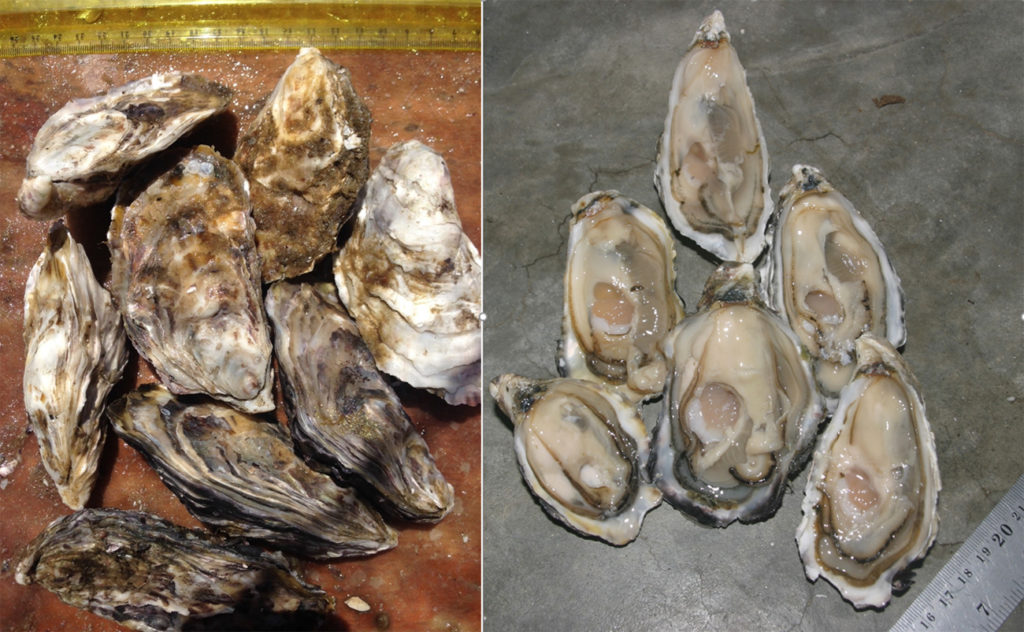
Intelligence
An emerging shellfish farming industry in Namibia
For shellfish farming in Namibia to continue expanding, industry must better comply with approved sanitation standards. The Namibian Shellfish Monitoring and Sanitation Program, currently in development, will help.


